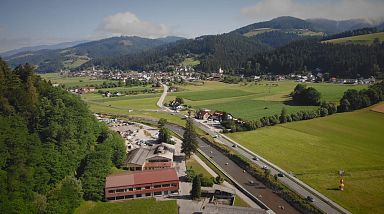In the last decade, Slovenia has experienced reoccurring floods. But since 2014, the basin of the Drava River and its tributaries have benefited from a European project involving the dredging, widening and containment of these rivers to protect and strengthen the surrounding areas.
With almost 30,000 kilometres of waterways, rivers are abundant in Slovenia. But over the last decade, this wealth of water has led to recurrent floods. For example, in November 2012 two of the Drava basin's tributaries, the Mislinja and the Meža, burst their banks, destroying fields, roads and factories.
However, since 2014 a European project is trying to reduce the risk of these rivers flooding.
The project aims to increase protection around the two rivers in urban, industrial and agricultural areas.
Its total budget is 25 million euros. Three million of which were provided by Slovenia's national water company. 80% of the rest was financed by the EU cohesion policy and 20% by Slovenia.
In Pameče, the river has been dredged, its bed widened and its banks restored. Andrej witnessed the devastating flood 9 years ago and praises the sustainability of certain solutions, like these rocks that are strategically placed in the case of flooding.
Andrej Breznik is a city councelor in Slovenje Gradec. He thinks that what they've done to protect the surrounding area from flooding is both aesthetically pleasing and well done. He is particularly happy that fish were considered. "They have put these rocks in place so that they can hide", he explained whilst showing us the riverbed.
Just a few kilometres down the road from Pameče, the centuries-old ironworks called SIJ Metal Ravne produces between 70 and 80 000 tons of steel a year. Its metal is exported all over the world. It was very nearly flooded in 2012.
To produce steel the factory needs water from the Meza, a heavy river in a narrow valley. There is no way to widen its bed in this area. That is why other solutions had to be found after the 2012 flood.
Nikolaj Sonjak a technical manager at the ironworks explains that the way to protect the area from floods was to tame the river. To this end, "the riverbed was developed, containment walls were built on both banks, power lines were raised and the 100-year flood levels were taken into account". According to him, this work has prevented a negative impact on the plant's operations.
Plans for the construction of a storage reservoir upstream of the Meza are underway. It is expected to include a flow regulation system with a dam to help protect the area from further floods.












